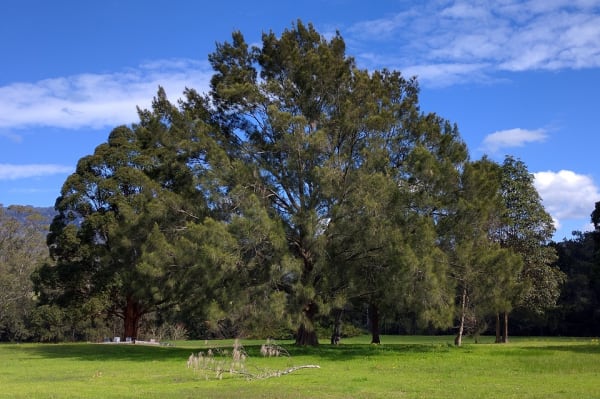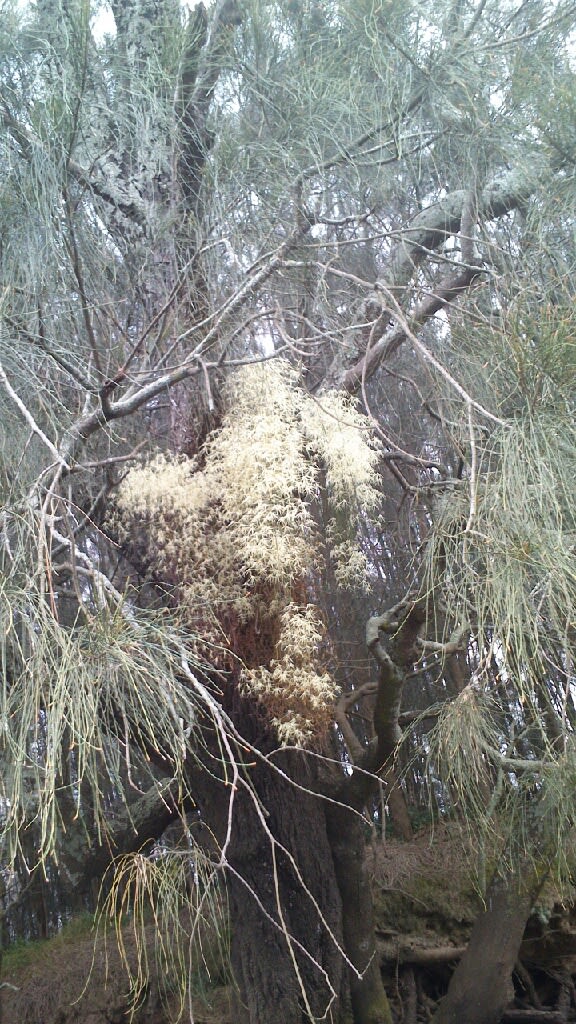Casuarinas, or She-oaks, are some of the most distinctive native trees, with their narrow dark green or grey-green branchlets, minute tooth-like leaves and fruits in the form of cones (also known as samaras).
You'll see She-oaks in low-lying coastal areas such as next to Lake Illawarra and on near-coastal flats, where the Swamp Oak (Casuarina glauca) often dominates – Oak Flats wasn't named for nothing.
You'll see them along the watercourses that run from west to east through the region, where there's often River Oaks (Casuarina cunninghamiana) helping to stabilise the edges of creeks and providing habitat for platypus that build burrows in the banks.
And you'll see them among the mighty eucalypt forests of the region, where giant Blackbutts (Eucalyptus pilularis) are often complemented by the Forest Oak or Rose She-oak (Allocasuarina torulosa), which has something of a weeping habit.

She-oaks are pretty unique, with plants in the genus Casuarina restricted to Australia, the Pacific and South-East Asia, and those in the genus Allocasuarina only occurring in Australia. The scientific name Casuarina comes from a Malay word for Cassowary. 'Allocasuarina' means 'the other Casuarina' and the two genera are closely related.
Although they look a bit like conifers, with their seed borne in cone-style structures known as samaras, they are true flowering plants; She-oaks bear either male or female flowers, though these are not particularly conspicuous.
Where She-oaks come into their own in terms of habitat value.
These are outstanding habitat species, providing shelter, shade and food for a range of birds, insects and other creatures. The endangered Glossy-black Cockatoo, for example, feeds almost exclusively on the fruit of the Forest Oak and the Black She-oak (Allocasuarina littoralis).
She-oaks are also outstanding hosts for a range of epiphytic plants (plants that grow on other plants) and a single old tree can be home to dozens or hundreds of individual Birds Nest Ferns (Asplenium australasicum), Elkhorn Ferns (Platycerium bifurcatum), Orange Blossom Orchids (Sarcochilus falcatus) and Tongue Orchids (Dendrobium linguiforme), just to name a few. Some species of orchid – such as the Pencil Orchid, or Rat's Tail Orchid (Dendrobium teretifolium) – have a strong preference for growing on certain She-oak species.

Despite their importance as habitat species, She-oaks are often considered a 'problem plant' in urban areas. Unfortunately they are often subject to vandalism by people who don't understand their ecological significance and see them only as an obstruction to their water view.
Perhaps if more people understood how many other species depend on She-oaks, we'd collectively let them be in the areas they choose to grow.





